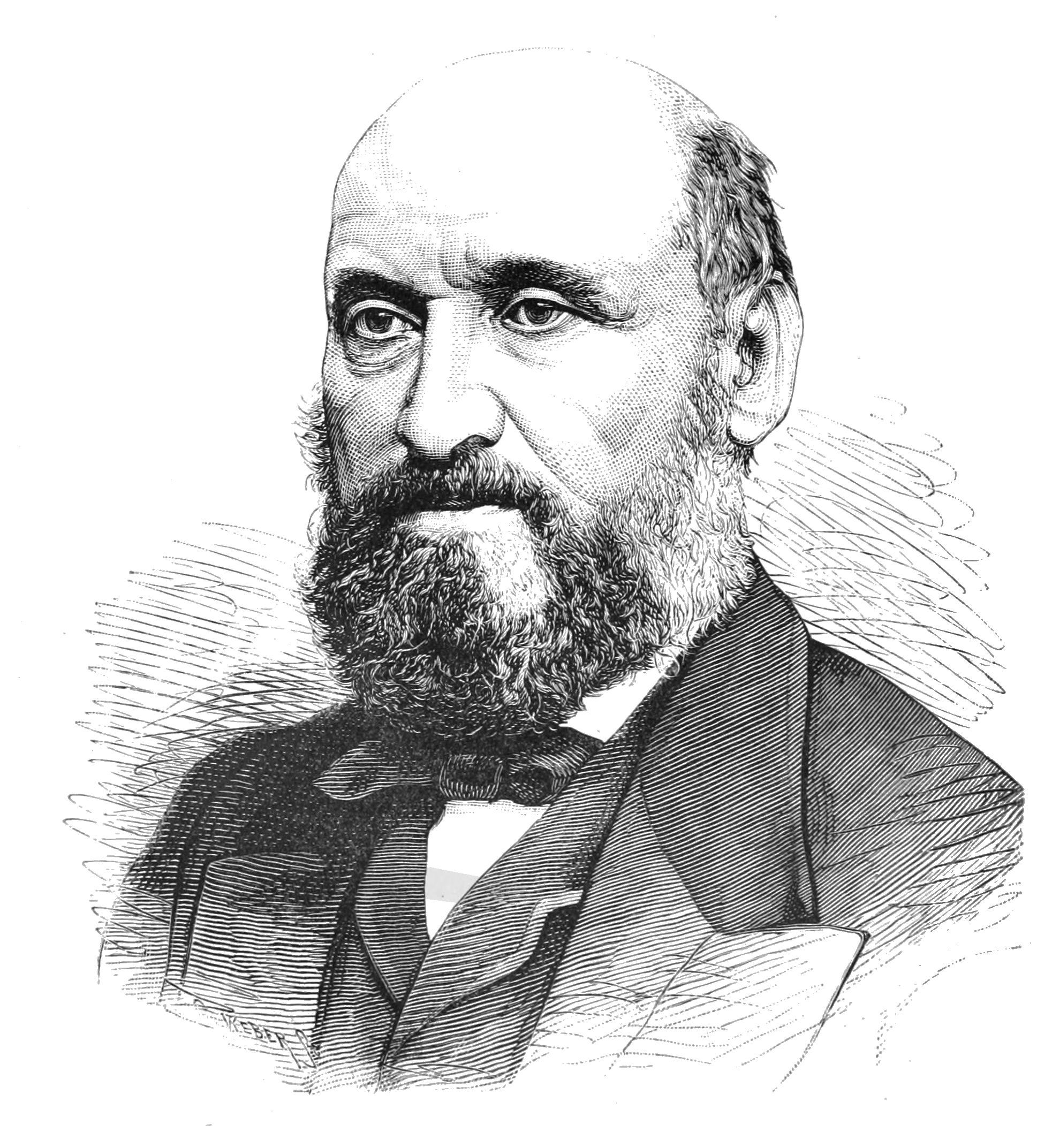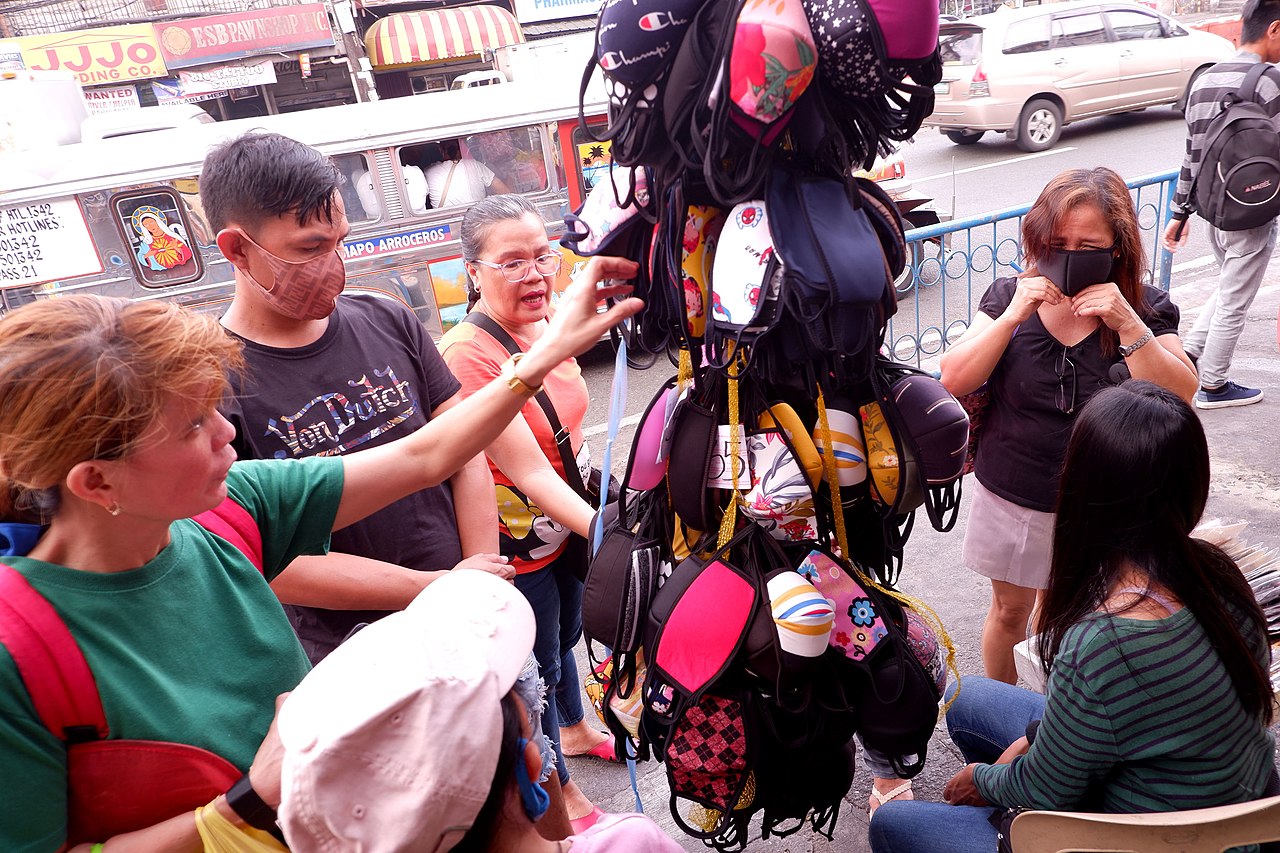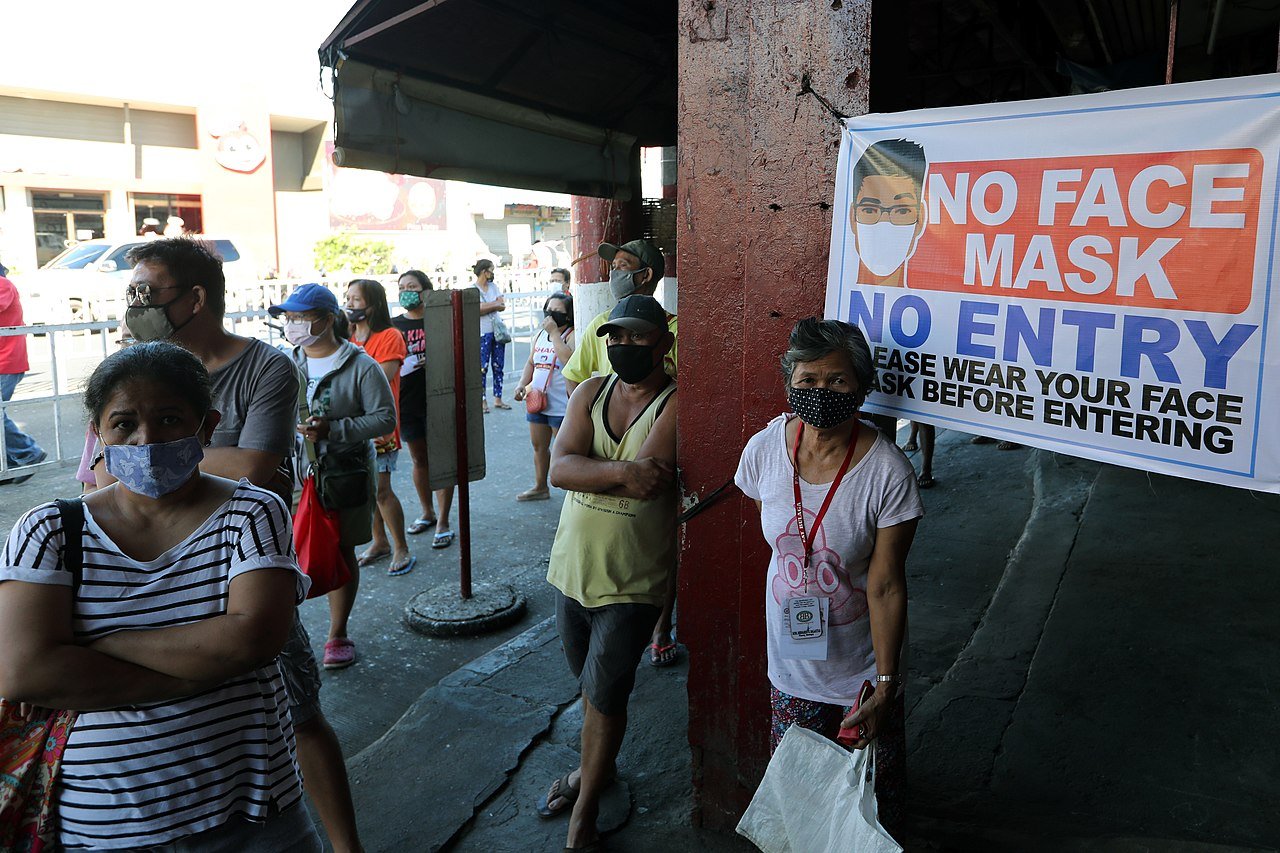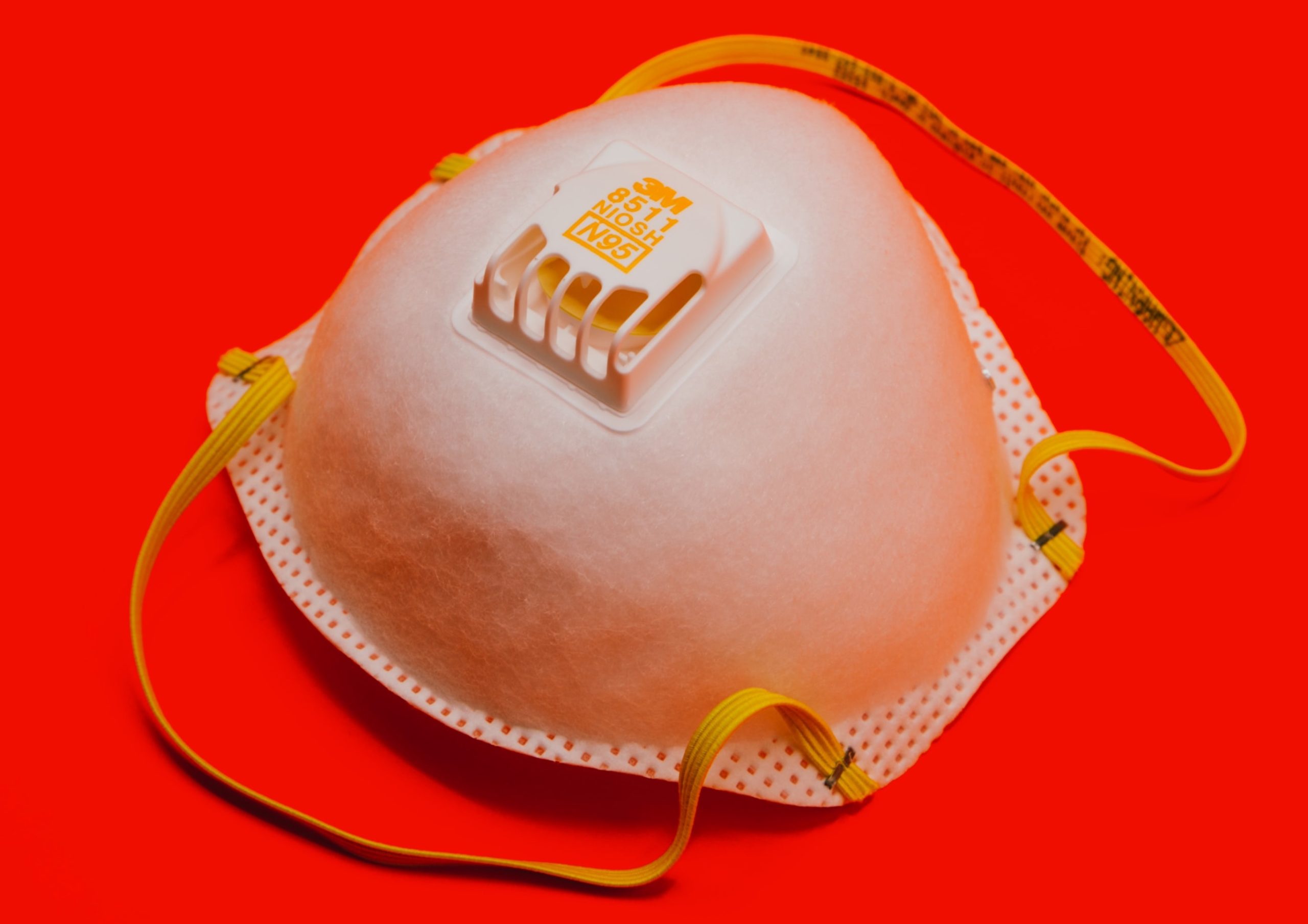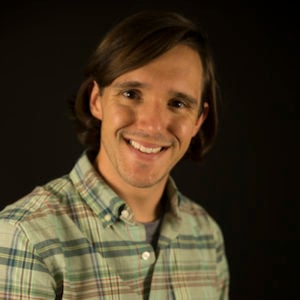Michael Fumento is a lawyer, journalist, and author who has investigated epidemics and controversial scientific issues for the past thirty-five years. His books include The Myth of Heterosexual AIDS: How a Tragedy Has Been Distorted by the Media and Partisan Politics, described by former CDC chief epidemiologist Dr. Alexander D. Langmuir as “a major contribution, allaying public hysteria and focusing efforts for control and care to the high-risk groups most in need”; and Science Under Siege: Balancing Technology and the Environment, of which former National Academy of Sciences president Frederick Seitz said, “Fumento’s clear exposition of the way in which knowledge gained through good scientific research can be distorted and used to spread misconceptions and needless public fear should receive widespread attention.”1
On March 27, 2020, we discussed the COVID-19 pandemic. I’ve edited our conversation for clarity and added citations where I think they may be helpful.
Hersey: Why listen to a lawyer on the subject of viral outbreaks?
Fumento: Lawyers are trained much better than journalists to do research. If a journalist makes a mistake, nobody will even say anything, because they make so many mistakes that there’s no point. The New York Times runs a headline, “World to End Tomorrow,” and the next day, on page eighteen, it has a single-sentence correction: “World to End Yesterday.” That’s journalism.
On the other hand, lawyers deal with life and death and with billion-dollar lawsuits. We have thoughtful, well-trained opponents; journalists don’t. We have to assume that another guy or a team of people is against us who are as smart as we are. So we have to deeply research everything.
As for viral outbreaks, I did my first AIDS article back in 1986, which made international news. Many responded to the AIDS outbreak saying, “Everybody’s going to get it now.” I called BS and was right. And over the years, with one disease after another, I just got better and better at understanding outbreaks: AIDS, SARS, Ebola I, Ebola II, Creutzfeldt-Jakob (aka “mad cow”) disease, avian flu, Zika virus. Every single time, I called it right, and by some great coincidence, the public-health people always called it wrong.
Hersey: And you think that there’s a basic mechanism that operates more or less the same with all of these outbreaks?
Fumento: Yes, it’s quite simple. It’s called Farr’s Law, and it was first promulgated in 1840, which is, importantly, eight years before the first public health organization anywhere in the world.2 It says that all epidemics—meaning all epidemics—follow a more or less bell-shaped curve. They start out with a very steep incline. And then over time they slope and they slope, and then they eventually flatten and go down. That may seem obvious even to those who don’t know about the law. Yet we hear with each new epidemic, “If the virus continues to spread at the current rate . . . ,” and the answer is always the same: Viruses never continue to spread at the current rate—never, ever, ever.
It’s the way all diseases work. They get the low-hanging fruit first. And then, as time goes on, they exhaust the low-hanging fruit, and it’s harder and harder for them to claim victims. And the numbers go way down, sometimes to zero: SARS disappeared in July 2003, eight months after it appeared.3
Hersey: But what if all or most of us prove to be low-hanging fruit for COVID-19?
Fumento: What we’re seeing with COVID-19 indicates that the vast majority of people infected may never even know it. They’ll get no symptoms at all, or will sneeze a little bit, cough a little bit; they’ll have a bit of a sore throat.4 But that’s as bad as it’ll get for them. Now we don’t know the percentages yet, because we haven’t had really widespread testing. But that will come. And when it does come, we will have to make up a new word to express the vastness of the majority of those infected who show no symptoms.
So, I think the ultimate death rate from COVID-19 will be much, much lower than is projected right now. You can’t project it without Farr’s Law. You have to plot it on a curve.
Hersey: And, of course, many are, and bureaucrats are acting on the view that flattening the curve requires extreme social distancing and government-enforced lockdowns. Do these help to flatten the curve, and is it possible that opening cities back up could cause a new high in the bell?
Fumento: Well, we know, at the extreme end, that hermits don’t get contagious diseases. But we have to make some very hard decisions. And right now, these decisions are being made by those saying, as John F. Kennedy put it, “We will pay any price. We will bear any burden.” This to prevent each and every COVID-19 case, never mind COVID-19 death. But the people saying that, they all have secure jobs.
I mean, think about that: If you work for the World Health Organization or the Center for Disease Control, COVID is not going to put you out of a job; it probably will get you more money. If you’re a tenured professor at Imperial College, or anywhere, you’re not going to lose your job to COVID-19. If anything, you have a lot more free time on your hands because the universities are closed or have moved classes online. By and large, the people making the projections that have led to these measures have nothing to lose.
But I am watching people around me in the Philippines. What’s happening is that the mall closes down, and everybody in that mall is suddenly out of work—and almost none of them have any savings. You work in a hardware store? Closed: no work, no savings. You work at a pastry shop? Closed: no work, no savings. You work at a McDonald’s? Closed: no work, no savings. These people are suffering tremendously. So I think we need to look at the suffering caused by lockdowns. People suffer when they get COVID, and they suffer when they’re thrown out of work and can’t eat. They suffer both ways.
Click To Tweet
Further, we don’t know how effective lockdowns are. Look at the differences between the South Korean response and the Chinese response. It’s clear that South Koreans have handled this outbreak much better than the Chinese.5 Their crude fatality rate at this point is something like 1.5 percent. China’s is about 4 percent. So they’ve kept fatalities very low in South Korea, and they’ve done it without imposing lockdowns like China. But, the United States isn’t following the South Korean model. It’s following the Chinese model.6 Why? When did the Chinese government begin to set an example for the free world?
And maybe you’ve heard that Imperial College—which did more than any other institution to drive these lockdowns—has just abandoned their model.7 It predicted that if we did nothing, up to 2.2 million people would die in the United States from COVID-19, and at best—with a lockdown—1.1 million people would die.8 That was best case scenario: 1.1 million people. Really? But they also said that 510,000 Brits would die without a lockdown. Then yesterday [March 26, 2020], Neil Ferguson, the chief researcher of that model dropped 510,000 to 20,000. He just abandoned his model—threw it in the trash can. Yet that model has driven, California, New York, and all these other states to institute lockdowns. It’s probably what drove the Philippines to do so too.
Lockdowns completely ignore the power of human ingenuity. Early on here in the Philippines, we ran out of face masks. So people started making their own.9 And now, on every street corner, you see hundreds and hundreds of face masks, of every different color. And they’re really pretty. They look like designer styles, like Pierre Cardin and Polo face masks. That’s how people react; they act in their own interest. That’s how capitalism works, and that’s how we should be treating this. But we’re not. We’re following the example of a screwed-up communist government.
Hersey: I definitely agree that lockdowns are a “cure” worse than the disease. I want to ask about this study, though. I’m no expert, but I read Ferguson’s paper and came to a different conclusion. If I’m understanding it correctly, Ferguson predicted up to 550,000 deaths in the unlikely event that the government did nothing and far fewer depending on the policies adopted and the speed with which they were adopted. His lowest estimate was 5,600 deaths over a two-year period if the country implemented case isolation, home quarantine, social distancing, and school closures and did so as soon as the country reached 60 ICU cases within a week. In another scenario, he predicted 21,000 deaths if the country took all of these measures as soon as it reached 300 ICU cases within a week. Based on the timing and the measures that the UK has adopted, he’s now saying 20,000 deaths are likely, which is well within his initial range, right?
Fumento: This is a game he plays. During the mad cow scare he “modeled” 50 to 50,000 cases.10 What kind of a model is that? Of what value is it? It serves the same purpose as all of these models: to scare people and get in the news. He knows how this plays out in the news: “Imperial College Model predicts as many as 50,000 deaths from mad cow disease!” Final total number: 176. Hey, it was within the range!
Such people should be held accountable. Instead they’re given a pass to repeat it all over again—and cause the next hysteria.
Hersey: You mentioned the success of South Korea. It was ready for this with an incredible capacity to test for COVID-19. To what extent is testing important for managing the pandemic? And do you think that the natural pivot for those who don’t have access to testing is the statist answer of massive mandatory lockdowns?
Fumento: Well, testing does have a downside, called the nocebo effect.11 It’s the opposite of a placebo effect. You test positive, and you’re told that you ought to be sick, and suddenly you get sick. You really do. I mean, some people who are told they’re sick, they suddenly vomit. Well, that’s real vomit. They get headaches; they’re real headaches.
When we test people, and they find out they have COVID—even if they were experiencing no symptoms before—they freak. They think of all of the horrible things they’re hearing on the news. And they go to the hospital with real symptoms. Their joints ache. Their breathing is labored, which is a very common nocebo symptom. They will get a bed. And they will displace somebody else who might have gotten that bed. So widespread testing can have a dark side.
Hersey: The reason that testing seems like a huge positive to me is that if I know that I’m sick, then I know that I should self-isolate. I’m not going to go out and spread this thing, even if I don’t have any symptoms.
Fumento: It may be helpful in that respect, but we don’t know. Relevant here is the concept of “viral load.”12 We really learned a lot about viral load during the AIDS epidemic. What we found was that people with low amounts of the virus in their blood and semen didn’t develop AIDS as quickly, nor were they as infectious.
The point is that if you test positive for COVID but you’re showing no symptoms—you’re not sneezing, you’re not coughing—you’re probably not that big a problem, because, apparently, it’s being spread primarily by sneezes and coughs.
Hersey: So you doubt that people are spreading the virus before experiencing these symptoms?
Fumento: Not entirely. Maybe someone is a nose picker. I’m giving you an extreme example, but maybe he picks his nose and then shakes somebody’s hand. Or less extreme: Otherwise asymptomatic people sneeze all the time. You don’t need COVID to sneeze. If they sneeze into their hands and then they shake somebody’s hand, or touch a banister or an escalator or a handrail, then even an asymptomatic person has a chance of transmitting the virus. It’s just a whole lot lower than somebody who’s sneezing and coughing like a madman.
Hersey: As you said, the Imperial College study likely has been the most influential driver for instituting lockdowns. Were its projections premised on there being no real drop in the spread of the virus until a vaccine is available?
Fumento: No, they did admit that there would be a drop-off in the summer. They admitted what a lot of people don’t admit: that heat, humidity, and sunlight are bad for a coronavirus. And by the way, how do we know that about coronaviruses? We know about four coronaviruses that cause colds; we know about SARS, which was a coronavirus; and we know about MERS, another coronavirus. So we’re familiar with at least six coronaviruses, and all six are affected adversely by heat, humidity, and sunlight.13
Early research in China, Iran, and the United States also supports the theory that heat, humidity, and sunlight will be bad for COVID-19.14 So, they couldn’t ignore that. They said cases will drop severely during the summer, but they’ll come back in the winter. And so we will have to live with social distancing, lockdowns, and closed schools, perhaps with intermittent periods of relaxed restrictions, until there’s a vaccine: eighteen months to two years. That would definitely cause a worldwide depression. Absolutely.
Hersey: Now, obviously when it’s winter in the northern hemisphere, it’s summer in the southern. What’s to keep this from simply switching poles?
Fumento: That wasn’t the case for SARS, which died out worldwide in July 2003. It didn’t just flip. One reason is that a whole lot more people live in the northern hemisphere than live in the southern hemisphere.15
It’s likely that we will see a resurgence of COVID-19 in the fall in the northern hemisphere. But by then, a lot of people already will have been exposed and will have partial immunity or even full immunity.16 Moreover, scientists are testing a whole lot of different medicines.17 The most promising are the antivirals: antivirals that were developed for Ebola, such as remdesivir; antivirals that were developed for malaria, such as chloroquine and hydroxychloroquine; and many others. And my guess is that some of those will prove effective against COVID, but they need to be tested.
It’s very unfortunate that President Trump announced that chloroquine and hydroxychloroquine are effective against COVID.18 It may prove to be true, but we just don’t have evidence of that yet. But I think that between now and the fall, we will find some good treatments.
Hersey: What is the evidence for people developing immunity to COVID-19? Is this based on our knowledge of other coronaviruses?
Fumento: It is based on our knowledge of most viruses.19 Now, there are some viruses that you don’t develop immunity to: HIV, for example, because it actually attacks the immune system. So it’s an outlier.
But what we know from most other viruses is that people develop at least partial immunity. For example, you may have noticed that as you get older, you get fewer colds, whereas kids get colds like crazy.20 Why is that? Because there are a finite number of cold viruses out there. The older you get, the more cold viruses you’ve been exposed to, so the less likely you are to get a cold.
That said, viruses do tend to mutate, and if COVID-19 mutates enough by the fall, then a person who got infected with it in February could get it again in the fall or winter, but it wouldn’t be nearly as strong because they’d have partial immunity.
Hersey: Several car companies have announced plans to manufacture respirators, and now Trump is using the Defense Production Act to force some to do so on his terms. Do you think we will have a glut of these things?
Fumento: By fall, we’ll probably have a 100 percent excess of respirators. People will be buying them from Sharper Image. That’s another reason I think we will be so much more ready for this by fall. We weren’t ready this time around. We will be by then.
I’m not saying we’ll have a cure. But we’ll know enough to dampen the spread of the virus and to give the elderly a fighting chance.
Hersey: COVID-19 has been devastating for the elderly in China and Italy. But I’ve heard that in the United States, a large percentage of people in ICUs are under sixty, and a significant number of them are in their forties.21 Is the virus acting differently, or is something else going on?
Fumento: I haven’t seen that, but the virus is no different. No one is claiming that it has mutated. I think it may be a teeter-totter effect. That is to say, if our older people are doing better, then younger people will comprise a larger percentage of those hospitalized. It has to add up to 100 percent. It’s not like the virus is targeting younger people more than older people. So, just in terms of the total percentage, younger people will appear worse off.
Hersey: OK, so, if this statistic is true—and it may not be—then those interested may want to investigate things like how early and effectively the elderly began distancing in the United States versus China, along with the response of nursing homes and the like. And then there’s the response of younger people in both countries to consider.
What measures are you personally taking in response to COVID-19?
Fumento: Early on, I made a point of not wearing a mask, because when you have no symptoms, then part of what you’re doing is spreading panic. For a lot of people, when they see somebody else wearing a mask, they get a little panicky. So, I’ve gone against the grain a bit to try to reassure people. But I’ve started wearing one when I go out because now they can arrest you for not doing so!
Mind you, surgical masks don’t protect you.22 Who wears surgical masks, the patient or the doctor? The doctor does, the caregiver. It’s primarily to protect the patient. Take a look at a surgical mask. They’re open on the sides. A surgical mask may stop a sneeze or a cough from getting out, but it won’t necessarily stop one from getting in. So surgical masks aren’t necessarily a bad idea, so long as you know that it’s primarily protecting other people in case you’re sick.
You can get a mask like the one I have that is made for pollution or for working with fiberglass and fine powders, which is called an N95.23 These have holes small enough to keep out many (though not all) viral particles, and they seal around the sides of your face. So, if you’re going to buy a mask, get what’s called an N95, or if you can, an N99. But an N95 is enough for most people.
I’ve also always washed my hands well. The general level of hygiene isn’t great here in the Philippines, although it’s better than in China. Here, when you enter a store now, they spray your hands with hand sanitizer, which is very unobtrusive. It’s cheap. It’s quick. It’s nonrestrictive. I get in the store, what, a few seconds later than I otherwise would have? It’s a smart move. Using hand sanitizer regularly when in public is a smart move.24 By the way, when at home, don’t use hand sanitizer; use hot water and soap for ten to twenty seconds. It’s far more effective.
Locking people in their houses, telling them they can’t go to work anymore for an indefinite period of time—that’s intrusive and violates people’s rights. That’s taking away people’s livelihoods, which has a destructive cascading effect. I know people here who are out of work because of lockdowns in the United States. There’s one in my home right now. She works for a company based in California. California is under lockdown, so she’s out of a job. People in the Philippines are being screwed by the governor of California. This situation is happening all over the world.
One thing that is largely being ignored is the demand side of this crisis: Some people love this lockdown stuff. It’s like being in The Walking Dead, except they’re not actually going to get bit—or so they think. But when they see their paychecks, when a depression sets in, it won’t be so fun anymore.
I think that people are going to start pushing back. I’m sure there’s some pushback in the United States already: people violating the lockdowns and this and that.25 And over time, that will grow as the reality of the situation sinks in. It’s already happening in some countries. This grand social experiment in locking up healthy people is a test run for imposing authoritarian government, and it won’t end well. People will push back—because they have to.
Hersey: Michael, thanks so much for your thoughts on this vital topic. Stay healthy.
Fumento: Thanks. You, too.
Click To Tweet
You might also like
Endnotes
1. “Praise for The Myth of Heterosexual AIDS,” Fumento.com, http://fumento.com/books/myth.html, (accessed March 30, 2020); “Praise for Science Under Siege,” Fumento.com, http://fumento.com/books/science.html (accessed March 30, 2020).
2. Andre Ye, “What the Law That Forecasted AIDS, Ebola, & SARS Has to Say about the Coronavirus,” Medium, March 18, 2020, https://towardsdatascience.com/what-the-law-that-forecasted-aids-ebola-sars-has-to-say-about-the-coronavirus-2473894f03c5; “1848 and 1875 Public Health Acts,” SchoolHistory, https://schoolhistory.co.uk/notes/1848-1875-public-health-acts/ (accessed March 30, 2020).
3. Soumya Karlamangla, “SARS Killed Hundreds and Then Disappeared. Could This Coronavirus Die Out?,” Los Angeles Times, February 18, 2020, https://www.latimes.com/california/story/2020-02-18/sars-coronavirus-china-epidemic.
4. “No Signs of Coronavirus? Here’s Why You Could Still Be Carrying (and Spreading) It,” Cleveland Clinic, March 26, 2020, https://health.clevelandclinic.org/studies-show-carriers-with-mild-or-no-symptoms-are-key-part-of-covid-19-spread/.
5. John Power, “South Korea’s Coronavirus Response Is the Opposite of China and Italy—and It’s Working,” South China Morning Post, March 14, 2020, https://www.scmp.com/week-asia/health-environment/article/3075164/south-koreas-coronavirus-response-opposite-china-and.
6. “China Expert: U.S. Should Model Coronavirus Response after Korea, Taiwan,” Kiro Radio, March 18, 2020, https://mynorthwest.com/1774041/china-expert-us-coronavirus-response/.
7. Neil M. Ferguson, et al., “Impact of Non-pharmaceutical Interventions (NPIs) to Reduce COVID-19 Mortality and Healthcare Demand,” Imperial College COVID-19 Response Team, March 16, 2020, https://www.imperial.ac.uk/media/imperial-college/medicine/sph/ide/gida-fellowships/Imperial-College-COVID19-NPI-modelling-16-03-2020.pdf; Mark Landler and Stephen Castle, “Behind the Virus Report That Jarred the U.S. and the U.K. to Action,” New York Times, March 17, 2020, https://www.nytimes.com/2020/03/17/world/europe/coronavirus-imperial-college-johnson.html.
8. Mark Landler and Stephen Castle, “Behind the Virus Report That Jarred the U.S. and the U.K. to Action,” New York Times, March 17, 2020, https://www.nytimes.com/2020/03/17/world/europe/coronavirus-imperial-college-johnson.html.
9. Hanah Tabios and Robert Requintana, “Filipinos’ Ingenuity Produces Improvised Face Masks for Health Workers in the Regions,” Manila Bulletin, March 23, 2020, https://news.mb.com.ph/2020/03/23/filipinos-ingenuity-produces-improvised-face-masks-for-health-workers-in-the-regions/; Liam Lu and Samantha Bagayas, “Filipinos Find Ways to Improvise Safety in the Time of Coronavirus,” Rappler, March 19, 2020, https://www.rappler.com/move-ph/255146-filipinos-find-ways-improvise-safety-coronavirus.
10. Rob Lyons, “The Expert Behind the COVID-19 Shutdown Was Wrong on CJD and Foot-And-Mouth, and Is Probably Wrong Again Now,” RT, April 1, 2020, https://www.rt.com/op-ed/484622-expert-behind-covid-19-shutdown/.
11. Abby Wynne, “COVID-19 Corona Virus—Understanding the Placebo vs. Nocebo Effect,” March 4, 2020, https://abby-wynne.com/2020/03/04/covid-19-corona-virus-placebo-nocebo-effect/.
12. “Expert Reaction to Questions about COVID-19 and Viral Load,” Science Media Centre, March 24, 2020, https://www.sciencemediacentre.org/expert-reaction-to-questions-about-covid-19-and-viral-load/.
13. “Human Coronavirus Types,” Centers for Disease Control and Prevention, https://www.cdc.gov/coronavirus/types.html (accessed March 30, 2020); K. H. Chan et al., “The Effects of Temperature and Relative Humidity on the Viability of the SARS Coronavirus,” Hindawi, October 1, 2011, https://www.hindawi.com/journals/av/2011/734690/; Emma G. Gardner et al., “A Case-Crossover Analysis of the Impact of Weather on Primary Cases of Middle East Respiratory Syndrome,” BMC Infectious Diseases, February 4, 2019, https://www.ncbi.nlm.nih.gov/pmc/articles/PMC6362578/; Ted Regencia, “Will Warmer Weather Slow the Spread of Coronavirus?,” Aljazeera, March 11, 2020, https://www.aljazeera.com/news/2020/03/warmer-weather-slow-spread-coronavirus-200310050819610.html.
14. Jingyuan Wang et al., “High Temperature and High Humidity Reduce the Transmission of COVID-19,” Social Science Research Network, March 10, 2020, https://papers.ssrn.com/sol3/papers.cfm?abstract_id=3551767.
15. Alan Pirie, “The Differences between Northern & Southern Hemisphere,” SCIENCEING, April 24, 2018, https://sciencing.com/differences-between-northern-southern-hemisphere-8260091.html.
16. Apoorva Mandavilli, “Can You Become Immune to the Coronavirus?,” New York Times, March 25, 2020, https://www.nytimes.com/2020/03/25/health/coronavirus-immunity-antibodies.html.
17. “Treatments for COVID-19: Drugs Being Tested against the Coronavirus,” LiveScience, March 23, 2020, https://www.livescience.com/coronavirus-covid-19-treatments.html.
18. Charles Piller, “‘This Is Insane!’ Many Scientists Lament Trump’s Embrace of Risky Malaria Drugs for Coronavirus,” Science Mag, March 26, 2020, https://www.sciencemag.org/news/2020/03/insane-many-scientists-lament-trump-s-embrace-risky-malaria-drugs-coronavirus#.
19. “Immunity,” ScienceDirect, https://www.sciencedirect.com/topics/immunology-and-microbiology/immunity (accessed March 30, 2020), from Pathology Illustrated, 7th ed., edited by Robin Reid, Fiona Roberts, and Elaine MacDuff (London: Churchill Livingstone, 2011).
20. Jan Sheehan, “7 Ways Your Body Gets Better with Age,” EverydayHealth, September 10, 2008, https://www.everydayhealth.com/longevity/physical-health/body-gets-better-with-age.aspx.
21. Kerry Kennedy Meltzer, “I’m Treating Too Many Young People for the Coronavirus,” Atlantic, March 26, 2020, https://www.theatlantic.com/ideas/archive/2020/03/young-people-are-not-immune-coronavirus/608794/.
22. “N95 Respirators and Surgical Masks (Face Masks),” U.S. Food and Drug Administration, https://www.fda.gov/medical-devices/personal-protective-equipment-infection-control/n95-respirators-and-surgical-masks-face-masks (accessed March 30, 2020); “Can Face Masks Protect You from the 2019 Coronavirus? What Types, When and How to Use,” Healthline, https://www.healthline.com/health/coronavirus-mask (accessed March 30, 2020).
23. “Frequently Asked Questions about Personal Protective Equipment,” Centers for Disease Control and Prevention, https://www.cdc.gov/coronavirus/2019-ncov/hcp/respirator-use-faq.html (accessed March 30, 2020).
24. Naissan O. Wesley and Lily Talakoub, “Hand Washing and Hand Sanitizer on the Skin and COVID-19 Infection Risk,” Hospitalist, March 23, 2020, https://www.the-hospitalist.org/hospitalist/article/219484/aesthetic-dermatology/hand-washing-and-hand-sanitizer-skin-and-covid-19.
25. Emma Roberts, “People in the West Are Ignoring Advice to Stay Home. That’s Because It’s Too Confusing, One Expert Says,” March 23, 2020, https://www.cnn.com/2020/03/23/europe/coronavirus-lockdown-flouted-italy-uk-intl-gbr/index.html.


![[TEST] The Objective Standard](https://test.theobjectivestandard.com/wp-content/uploads/2017/10/logo.png)

